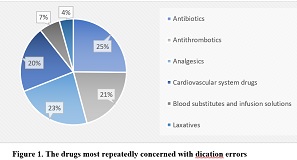Infection Prevalence of Soil-Tramsmitted Helminth (STH) at Metal Muslim Al-Hidayah Islamic Boarding School Students, Pasuruan, Indonesia

Downloads
Soil-Transmitted Helminth (STH) infection is a national and international health problem. STH infection can inhibit the process of absorption of food so that the body lacks nutrients. Children are the most commonly encountered because of the lack of awareness of maintaining personal hygiene, especially in Islamic boarding schools where children are outside the supervision of parents. This research is a cross-sectional study with an observational descriptive type. The location of this research is Metal Muslim Al-Hidayah Islamic Boarding School, Pasuruan. The study used stool samples from the students which were then examined using the Kato-Katz method. From the results of the study, it was found that the number of students infected with STH was 28 students (68.3%), the infection was known to be of this type of Trichuris trichiura. 18 students (43.9%) had mild infections and 10 students (24.4%) had moderate infections. the most infected students were male with 19 students (46.3%), while according to age the most were at the age of 9 years with 12 students 29.27%. this incident could be due to the activities of students playing outdoors plus a lack of awareness to maintain personal hygiene such as washing hands with soap.
Copyright (c) 2023 bagus dwi nugraha, Sri Wijayanti Sulistiawati, Widati Fatmaningrum

This work is licensed under a Creative Commons Attribution-ShareAlike 4.0 International License.
- The journal allows the author to hold the copyright of the article without restrictions.
- The journal allows the author(s) to retain publishing rights without restrictions.
- The legal formal aspect of journal publication accessibility refers to Creative Commons Attribution Share-Alike (CC BY-SA).
- The Creative Commons Attribution Share-Alike (CC BY-SA) license allows re-distribution and re-use of a licensed work on the conditions that the creator is appropriately credited and that any derivative work is made available under "the same, similar or a compatible license”. Other than the conditions mentioned above, the editorial board is not responsible for copyright violation.































